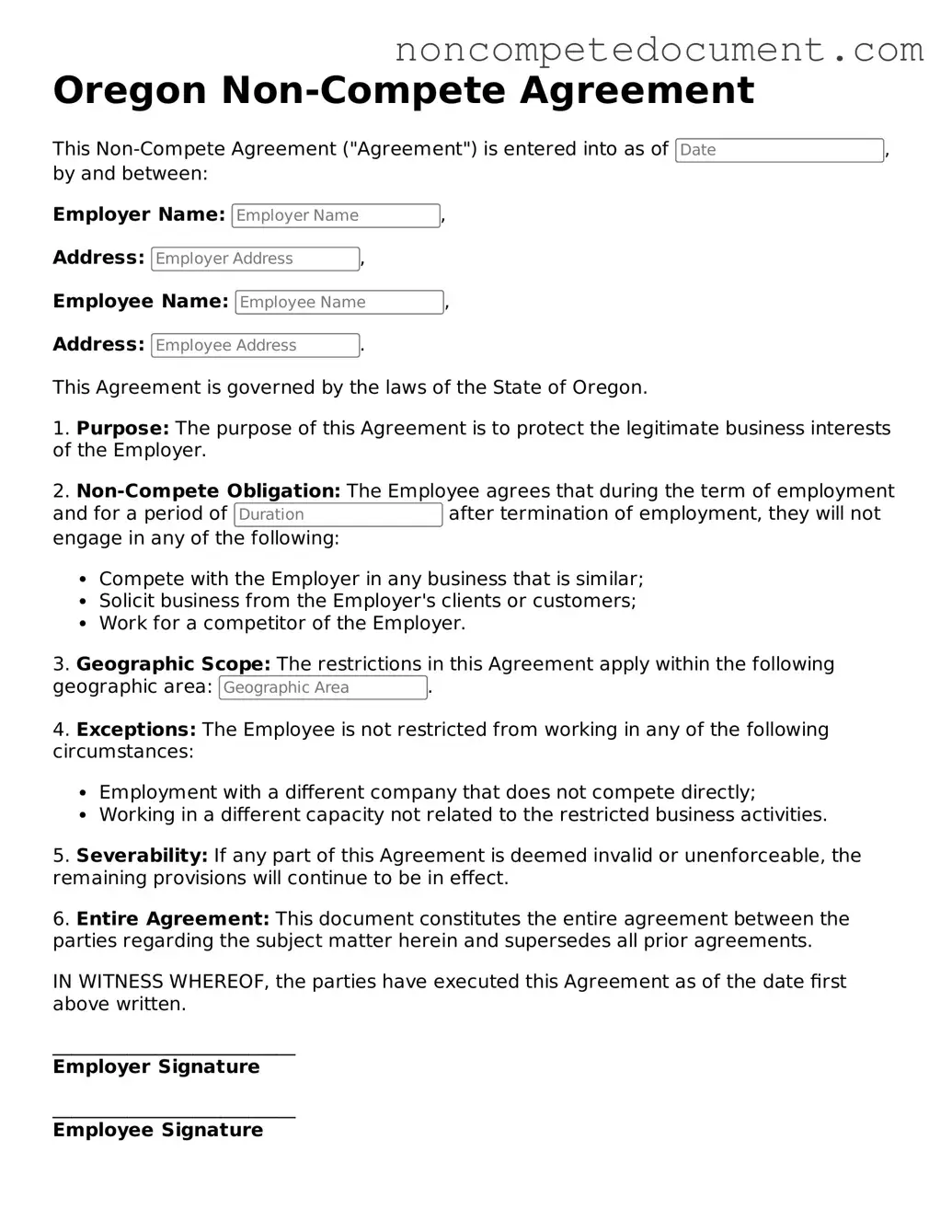When completing the Oregon Non-compete Agreement form, individuals often overlook critical details that can lead to complications later. One common mistake is failing to specify the duration of the non-compete clause. A vague or overly long duration can render the agreement unenforceable. It’s essential to provide a clear timeframe that is reasonable and justifiable.
Another frequent error is neglecting to define the geographic area covered by the agreement. Without a specific location, the non-compete may be considered too broad. This lack of clarity can make it difficult to enforce the agreement, as courts typically require a defined area to protect legitimate business interests.
Many people also forget to include a consideration clause. This clause outlines what the employee receives in exchange for agreeing to the non-compete. Without this, the agreement may not hold up in court. It’s important to demonstrate that there is a mutual benefit for both parties involved.
Some individuals might not take the time to read the entire agreement before signing. Skimming through the document can lead to misunderstandings about its terms. It is crucial to understand every aspect of the agreement, as this ensures informed consent and helps avoid potential disputes in the future.
Additionally, failing to consult with a legal professional is a mistake that can have serious consequences. Legal advice can provide insights into how the agreement aligns with state laws and regulations. An expert can help clarify any confusing terms and ensure that the agreement is fair and enforceable.
Another mistake is not considering the nature of the business and the role of the employee. Non-compete agreements should be tailored to fit the specific industry and position. A one-size-fits-all approach can lead to challenges in enforcement, as different roles may require different levels of protection.
People often overlook the importance of including a severability clause. This clause allows parts of the agreement to remain in effect even if other sections are found to be unenforceable. Without it, the entire agreement could be voided due to one problematic section.
Lastly, individuals may not keep a copy of the signed agreement. Retaining a copy is vital for future reference. Both parties should have access to the agreement to ensure clarity and understanding of the terms. This simple step can prevent misunderstandings and disputes down the line.
